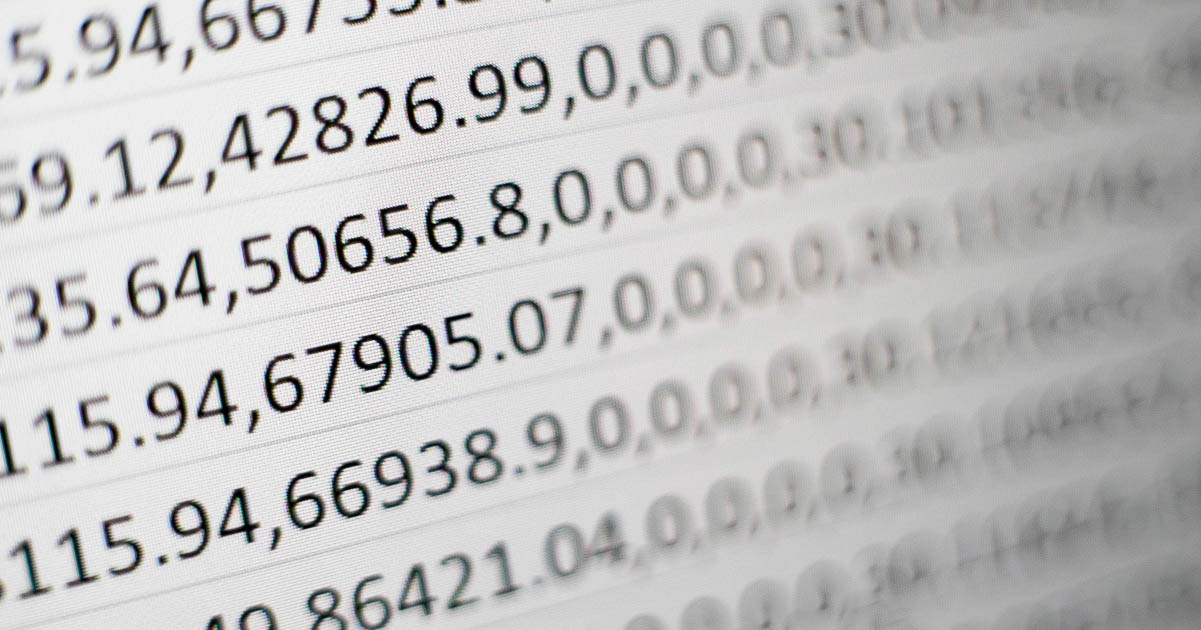
A Quick Guide to Numbers in MLA Style
Your client might not know all the details of MLA style. As an academic proofreader, then, your work may involve checking that documents follow MLA conventions. Thus, in this post, we’re looking at how to present numbers in academic writing according to MLA style.
Numbers in MLA: Numerals or Words?
MLA style sets out two approaches to numbers. In writing that involves few numbers, the MLA Handbook advises spelling out numbers that can be written as one or two words:
one, thirty-six, ninety-nine, one hundred, three million
It also says that plurals of spelled-out numbers should be treated as nouns:
fives, thirties
Other numbers, however, should be presented as numerals:
5¾, 305, 643, 2,798
For writing that uses numbers frequently, meanwhile, the MLA advises:
- Using numerals with units of measurement (e.g., 55 inches, 800 grams) and other numbers presented alongside them (e.g., comparisons or reports of experimental data).
- Expressing larger numbers as a mix of numerals and words (e.g., 7 million, 1.4 billion).
- Other numbers should be spelled out if they can be written as one or two words.
In both approaches, the MLA also advises using numerals for:
- Numbers used with abbreviations or symbols (e.g., 8lbs., 6:00am, $7.90).
- Addresses (e.g., 635 New Street, 81 5th Street).
- Items in a numbered series (e.g., Year 5, chapter 3, volume 4).
- Dates (e.g., September 10, 2020, August 5, 1996).
- Decimal fractions (e.g., 5.6, 3.142).
In addition, in both styles, numbers should be spelled out at the start of a sentence (or the sentence should be rephrased to avoid starting with a number). When proofreading, then, make sure the guidelines above are applied consistently according to the document type.
Commas in Numbers
MLA style recommends placing a comma after every third digit in large numbers. For example:
7,400
40,000
8,456,143
145,789
However, commas are not used in page and line numbers, addresses, or four-digit years.
Page Ranges in MLA Style
For a range of page numbers in a citation or the Works Cited list, the MLA says to write the second value in the range in full for numbers up to 99. For example:
5–7
12–19
43–55
78–99
For larger numbers, though, only the last two digits of the second number should be given. The exception is when more are necessary for clarity:
102–07
88–116
2,788–856
The rules for years are a little different. If a range of years begins AD 1000 or later, MLA says to omit the first two digits of the second year if they are the same as the first two digits of the first year. Otherwise, though, you should make sure both years are written in full:
1900–07
1986–2001
If the years discussed fall between AD 1 and 999, though, follow the general rules for inclusive numbers. And make sure ranges of years that begin before AD 1 are written in full.
Punctuating Number Ranges
In published work, MLA follows the convention of using an en dash for number ranges:
She spent her most productive period (1907–1912) in Amsterdam.
However, for simplicity, MLA also permits a hyphen for number ranges in student writing:
She spent her most productive period (1907-1912) in Amsterdam.
If you’re proofreading student work, then, there is no need to replace hyphens in number ranges. You can simply check that ranges are punctuated consistently.
Roman Numerals
Finally, the MLA Handbook also has a few rules for using Roman numerals:
- Capitalized Roman numerals are used for the primary divisions in an essay or book outline and as suffixes for the names of persons (e.g., Part I, Henry VII).
- Lowercase Roman numerals are only used when citing pages that are so numbered (e.g., in the preface or introduction of a book), with ranges written out in full (e.g., xxv–xxviii, iv–xii).
If you see Roman numerals in a document, make sure they follow these conventions.
Becoming A Proofreader
Here, we’ve seen what to look out for when proofreading numbers in a document that uses MLA style. But you can learn all about style guides, formatting, and proofreading in general with our Becoming A Proofreader course! Sign up for a free trial today to find out more.



Leave a Comment
Your email address will not be published.